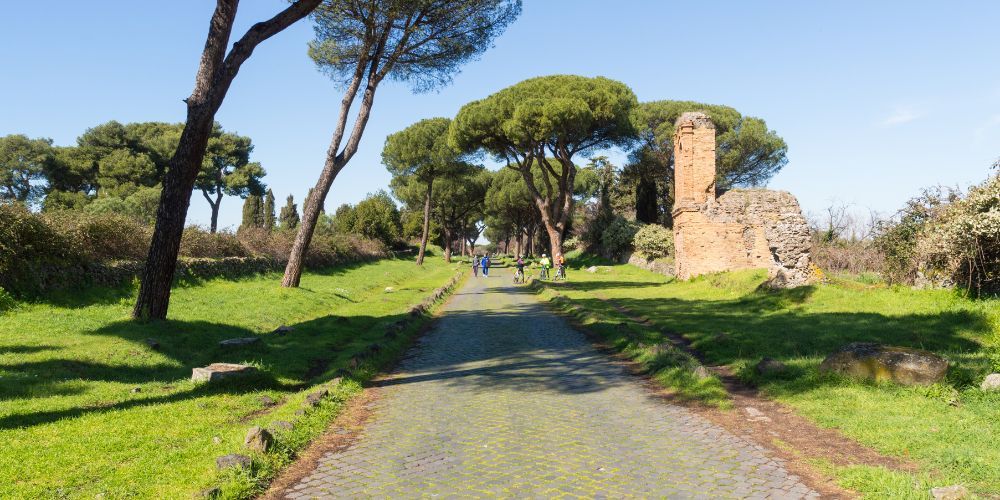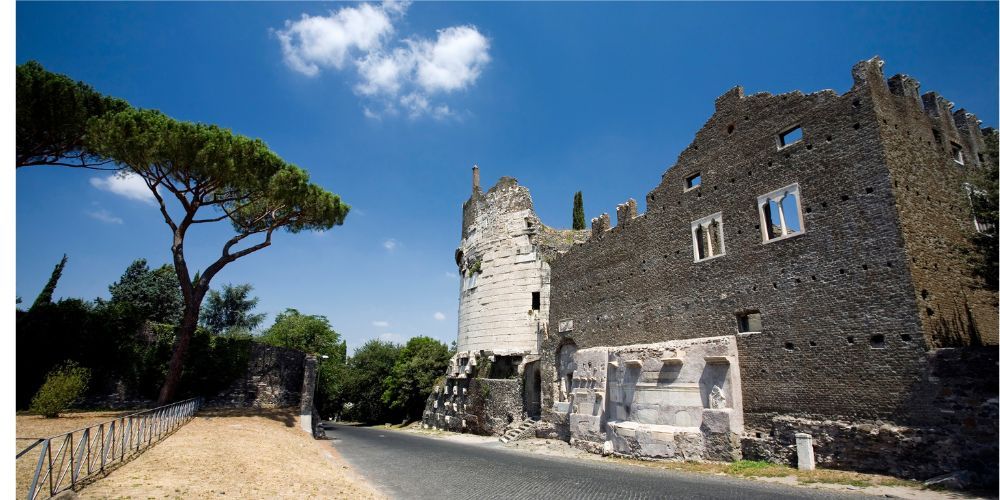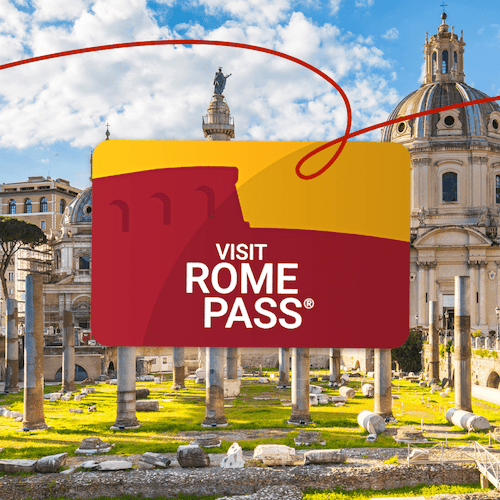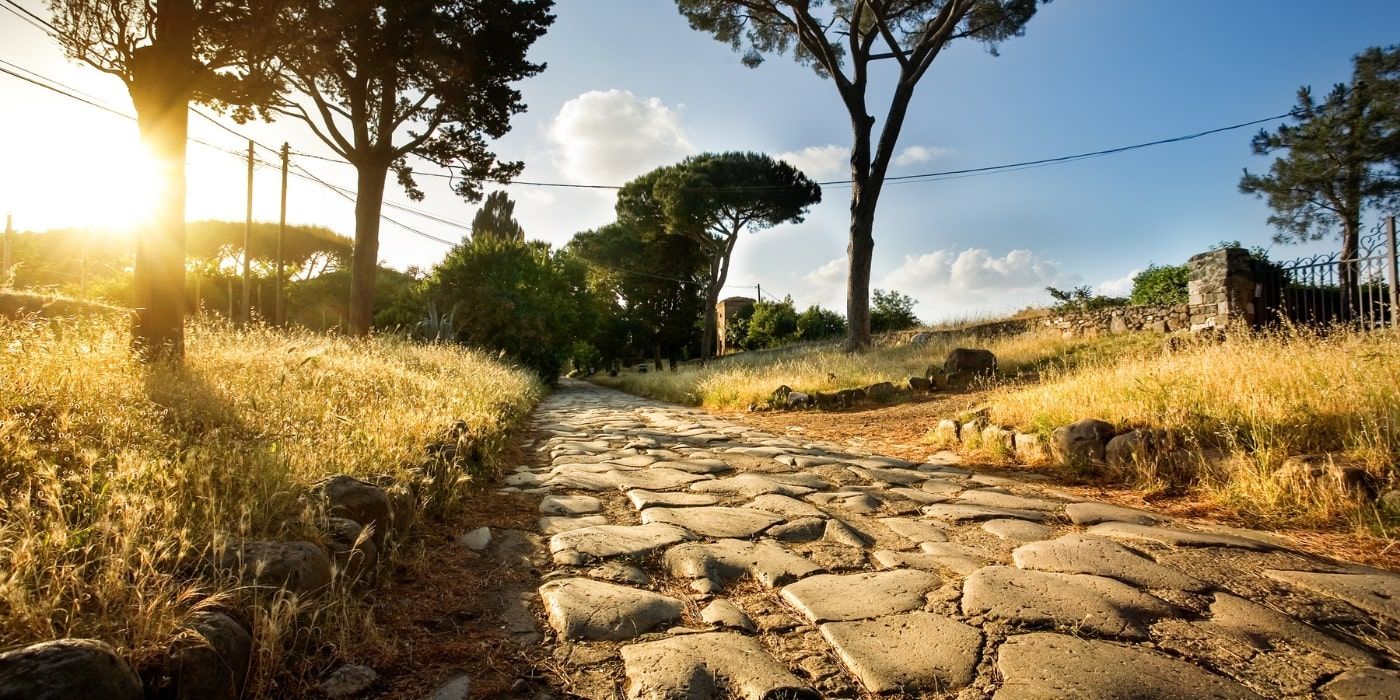It is the queen of the ancient Roman roads and even today it does not lose its appeal, despite the almost 2500 years of history behind it. It is the Appian Way, recognized by UNESCO as a world heritage site, whose foundation stone was laid in the 3rd century BC but which still continues to fascinate today, indeed it is the object of the desire of stars and VIPs who would like to set up their own dream house, perhaps next to some famous ancient villa.
A prestigious recognition for the Regina Viarum, as the ancients called the Appian Way, which arrived from New Delhi, where the 46th session of the UNESCO World Heritage Committee took place. For Italy it means the 60th archaeological site that the United Nations body protects for its historical and artistic value. No country can boast such a rich heritage.
Discover the Appian Way with an ebike tour
The Appian Way, a UNESCO World Heritage Site to Unite Rome and Magna Graecia

The Appia Way, a stretch
The Appia connected Rome to the south of Italy, first Capua and then Benevento, the Venosa which was the birthplace of the poet Horace and then down to Brindisi and its port towards the East. But above all, the queen of the streets opened the grandeur of Rome to the splendors of Magna Graecia, suddenly uniting not only the armies and trade but also the culture of the two great civilizations of the ancient Mediterranean world.
The magnificence of the Appia can be seen immediately, just south of Rome, where an area designated as a park was identified as early as 1965. Thus was born the Appia Antica archaeological park, which today extends over 4580 hectares for approximately 16 kilometers in length, all to be enjoyed with long walks and by bicycle (there are many rental possibilities). A park that blends nature and history, an open-air museum that joins that of Ostia Antica and extends the possibilities of visiting a Rome that never ceases to surprise you.
The ideal route of the Appia Antica Park starts from Porta Capena, practically a stone's throw from the Baths of Caracalla. But the entrances to the park are multiple and there are many possibilities to get there, the metro line A offers at least three stops: Colli Albani, Parco Appia Antica and Santuario del Divino Amore. You can also get here by bus 702, which you can take by getting off at the Laurentina metro B stop.
Discover the Ostia Antica archaeological ParkAppia Antica, a park that blends nature and history

The mausoleum of Cecilia Metella
There are many green areas along the 16 kilometers of the Appia Antica Park in Rome. The Caffarella valley with its rich biodiversity, the Tor Marancio estate, the areas of Divine Love near the sanctuary, Falcognana and the Mugilla, lend themselves to outdoor experiences and there is no shortage of trips and guided visits with various associations that take care of the park.
And then the monuments, from the classical age up to the modern era. The mausoleum of Cecilia Metella is very famous, whose origins date back to 2000 years ago (in via Appia Antica 161), to be visited together with the nearby Complex of Massenzio (number 153). From the beautiful Porta di San Sebastiano, which houses the Museum of the Walls, you reach the 8th century church of San Cesareo In Palatio, then the medieval Casina del Cardinal Bessarione.
Visit the Baths of Caracalla and the Circus MaximusThe Appia is the 60th Italian archaeological site included in the UNESCO heritage

Capua, first city reached by Appia Way
Continuing south and leaving Rome (the Park also touches the municipalities of Ciampino and Marino), you come across the archaeological area of the Sepulcher of the Scipioni, a funerary complex from the 3rd century BC, therefore at the dawn of the construction of the road. Also worth visiting is the Sepulcher of Priscilla from the 1st century AD and the small church of “Domine Quo Vadis”, where Christian tradition celebrates the appearance of Jesus to Peter as he was about to reach Rome and become the first Pope.
After about 3 kilometers from the start of the route you come across many catacombs, symbols of the first celebrations of the Christian faith. Among these, those of San Callisto, San Sebastiano and Domitilla. The villas are also famous, such as that of the Quintili and the Villa Capo di Bove complex, now home to the Antonio Cederna archive, the first environmentalist who believed in the Appia Antica Park.
Live all the experiences of Rome with the Visit PassAbout the author
Written on 01/08/2024




Antonio Angione
The Appia Antica is the 60th Italian archaeological site to get the prize. No other country can boast as much protection. Find out more